#Alexandria tourism
Explore tagged Tumblr posts
Text
Mercedes car rental

شركة VIP Mercedes تأجير مرسيدس للمطار
Offering a 15% discount on Mercedes car rental in Cairo ايجار مرسيدس
Rent a Mercedes E200 for Luxurious Airport Transfers and Sightseeing Tours in Egypt
Looking for a premium car rental experience in Egypt? Mercedes Rental Services is your trusted choice for luxury car rental with the stylish and comfortable Mercedes E200. Whether you need reliable airport transfers to and from Cairo International Airport or you’re planning a memorable sightseeing trip, our Mercedes E200 offers the perfect combination of luxury, performance, and comfort for your journey.
### Mercedes E200 for Exclusive Sightseeing Tours
Explore Egypt’s breathtaking destinations with the sophistication of a Mercedes E200. Visit the Pyramids of Giza and marvel at one of the Seven Wonders of the Ancient World. Drive along the scenic Nile River in Cairo, or enjoy a day trip to Alexandria to see the Mediterranean coast, historical sites, and famous landmarks like the Citadel of Qaitbay. Take a luxurious drive to Luxor and Aswan to discover the wonders of ancient Egyptian temples and monuments. With our Mercedes E200, you’ll enjoy every moment of your journey in elegance and style.
Why Choose Mercedes E200 for Your Next Trip?
Our Mercedes E200 features a sleek design, leather interiors, advanced safety features, and superior handling, making it the ideal choice for anyone seeking a luxury experience on Egyptian roads. This vehicle is not only visually stunning but also provides a smooth, safe, and quiet ride, ensuring that you arrive at every destination feeling relaxed and refreshed.
Key Features of Our Mercedes E200 Rental:
- Airport Transfer Service: Arrive at your destination with style and comfort.
- Private Sightseeing Tours: Explore Egypt’s top tourist spots in a premium vehicle.
-Professional Drivers : Our chauffeurs are experienced and knowledgeable.
- Hourly and Daily Rentals Available: Flexible rental options for your convenience.
Book your **Mercedes E200 car rental** now with **Mercedes Rental Services** and enjoy luxury, comfort, and reliability. Perfect for **Cairo airport transfers**, city tours, day trips, and special occasions. Discover Egypt in a Mercedes E200 and elevate your travel experience.
- Mercedes E200 rental in Egypt
- Luxury car rental Cairo
- Airport transfer Mercedes Cairo
- Sightseeing car rental Egypt
- Mercedes for hire Egypt
- Rent Mercedes E200 Cairo.
Car rental, Mercedes rental, car rental price, Mercedes airport rental, Mercedes airport delivery, car rental services, Mercedes rental with driver, MercedesRental, MercedesForRent, MercedesAirport, MercedesVip ,Mercedes Viano rental, rent Mercedes Viano Egypt, airport transfer Egypt, Mercedes Viano for tourism, luxury van rental Egypt, Cairo airport transfer, Giza Pyramids tour, Alexandria tourism
For reservations and inquiries |
01119920103 _01101055099
Title |
12 Hegaz Street - Court Square - Heliopolis
Website|
Facebook|
#Car rental#Mercedes rental#car rental price#Mercedes airport rental#Mercedes airport delivery#car rental services#Mercedes rental with driver#MercedesRental#MercedesForRent#MercedesAirport#MercedesVip#Mercedes Viano rental#rent Mercedes Viano Egypt#airport transfer Egypt#Mercedes Viano for tourism#luxury van rental Egypt#Cairo airport transfer#Giza Pyramids tour#Alexandria tourism
0 notes
Text
Mercedes car rental in Cairo ايجار مرسيدس

شركة VIP Mercedes تأجير مرسيدس للمطار
Offering a 15% discount on Mercedes car rental in Cairo ايجار مرسيدس
Mercedes Viano Rental in Egypt – Premium Airport Transfer and Tourism Experience
Looking for a luxurious and comfortable ride for your travels in Egypt? Our Mercedes Viano rental service offers an exceptional experience, perfect for airport transfers and touring the most remarkable destinations in Egypt. Whether you are arriving at Cairo International Airport or looking to explore the treasures of Alexandria, Luxor, Aswan, and the Giza Pyramids, our fleet of Mercedes Viano vehicles ensures a smooth and memorable journey.
The Mercedes Viano combines elegance, spacious interiors, and advanced safety features, making it the ideal choice for travelers seeking comfort and style. Our rental services are tailored to meet your travel needs, whether you are on a family vacation, business trip, or private tour. Enjoy the finest travel experience with professional drivers, premium leather seating, and ample space, allowing you and your companions to relax and appreciate Egypt’s historic beauty.
Popular Mercedes Viano rental locations include: ايجار مرسيدس
Cairo and Giza – Travel in style to the Great Pyramids, Sphinx, and the Egyptian Museum.
Luxor and Aswan – Experience the grandeur of ancient temples and the Nile River with a private, comfortable ride.
Alexandria – Discover the beautiful Mediterranean coast and historic landmarks like the Citadel of Qaitbay and Alexandria Library.
Red Sea Resorts – Travel seamlessly to Hurghada, Sharm El Sheikh, and other Red Sea destinations for a relaxing seaside retreat.
Our rental service emphasizes flexibility, convenience, and professionalism, catering to all your travel requirements in Egypt. Booking a Mercedes Viano with us means you can count on reliability, comfort, and an elegant vehicle that reflects your standards. Choose a premium transportation experience with our Mercedes Viano for airport transfers, city tours, or exploring Egypt’s iconic tourist attractions.
Car rental, Mercedes rental, car rental price, Mercedes airport rental, Mercedes airport delivery, car rental services, Mercedes rental with driver, MercedesRental, MercedesForRent, MercedesAirport, MercedesVip ,Mercedes Viano rental, rent Mercedes Viano Egypt, airport transfer Egypt, Mercedes Viano for tourism, luxury van rental Egypt, Cairo airport transfer, Giza Pyramids tour, Alexandria tourism
For reservations and inquiries |
01119920103 _01101055099
Title |
12 Hegaz Street - Court Square - Heliopolis
Website|
Facebook|
#Car rental#Mercedes rental#car rental price#Mercedes airport rental#Mercedes airport delivery#car rental services#Mercedes rental with driver#MercedesRental#MercedesForRent#MercedesAirport#MercedesVip#Mercedes Viano rental#rent Mercedes Viano Egypt#airport transfer Egypt#Mercedes Viano for tourism#luxury van rental Egypt#Cairo airport transfer#Giza Pyramids tour#Alexandria tourism
0 notes
Text
Have a nice day 🥰☕✨
#happy morning#alexandria#tourism in egypt#Alexandria Marinas#happy time#reels#Egypt is the country of civilization#sophistication and beauty#egypt
9 notes
·
View notes
Text


Thridrangaviti Lighthouse, one of the most isolated lighthouses in the world.
#Thridrangaviti Lighthouse#lighthouse#iceland#isolated#Justin Bieber#beacon#navigation#coastline#shoals#reefs#rocks#boating#ocean view#lake life#alexandria#english channel#the lighthouse#robert patterson#army corps of engineers#lamp#whale oil#tourism#trip#travelling#Geography
6 notes
·
View notes
Text
استمتع برحلة فاخرة في مصر مع ليموزين نصار!

نقدم لك تجربة سفر لا تُنسى مع أسطولنا الفاخر من سيارات مرسيدس فيانو. سواء كنت مسافرًا للأعمال أو السياحة، فإننا نوفر لك خدمة نقل مريحة ومخصصة تلبي جميع احتياجاتك.
لماذا تختار ليموزين نصار؟
فخامة وراحة: استمتع بأعلى معايير الفخامة والراحة في سياراتنا الفسيحة والمجهزة بأحدث التقنيات.
سائقون محترفون: فريقنا من السائقين المحترفين على دراية كاملة بالطرق المصرية ومدنها، ويسعدهم مساعدتك في استكشاف المعالم السياحية.
مرونة في الحجز: قم بحجز سيارتك بسهولة ويسر، ونحن نضمن لك خدمة عملاء ممتازة على مدار الساعة.
أسعار تنافسية: نقدم لك أفضل الأسعار على إيجار سيارات ليموزين في مصر.
خدماتنا تشمل:
نقل من وإلى المطار: استقبالك من المطار ووصولك إلى فندقك بأمان وراحة.
جولات سياحية: استكشف جمال مصر مع جولاتنا السياحية المخصصة.
نقل رجال الأعمال: نقل كبار الشخصيات ورجال الأعمال بأعلى مستوى من الاحترافية.
حفلات الزفاف والمناسبات الخاصة: أضف لمسة من الفخامة إلى مناسبتك الخاصة.
English:
Experience a Luxurious Journey in Egypt with Limousine Nassar!
Enjoy an unforgettable travel experience with our luxurious fleet of Mercedes Viano cars. Whether you're traveling for business or pleasure, we offer you a comfortable and customized transportation service that meets all your needs.
Why Choose Limousine Nassar?
Luxury and Comfort: Enjoy the highest standards of luxury and comfort in our spacious cars equipped with the latest technology.
Professional Drivers: Our team of professional drivers are fully knowledgeable about Egyptian roads and cities, and they are happy to help you explore the tourist attractions.
Flexible Booking: Book your car easily and conveniently, and we guarantee you excellent customer service 24/7.
Competitive Prices: We offer you the best prices on limousine rental in Egypt.
Our Services Include:
Airport Transfers: Pick-up from the airport and drop-off to your hotel safely and comfortably.
Sightseeing Tours: Explore the beauty of Egypt with our customized sightseeing tours.
Business Transportation: Transport VIPs and businessmen with the highest level of professionalism.
Weddings and Special Occasions: Add a touch of luxury to your special occasion.
إيجار مرسيدس فيانو, استئجار مرسيدس فيانو, حجز مرسيدس فيانو, تأجير مرسيدس فيانو, مرسيدس فيانو للايجار, مرسيدس فيانو فخمة, مرسيدس فيانو VIP, مرسيدس فيانو أعمال, مرسيدس فيانو سياحة, مرسيدس فيانو نقل, مرسيدس فيانو القاهرة, مرسيدس فيانو الجيزة, مرسيدس فيانو الأسكندرية, مرسيدس فيانو مصر, إيجار مرسيدس VIP, استئجار مرسيدس VIP, حجز مرسيدس VIP, تأجير مرسيدس VIP, مرسيدس VIP للايجار, مرسيدس VIP فخمة, مرسيدس VIP أعمال, مرسيدس VIP سياحة, مرسيدس VIP نقل, مرسيدس VIP القاهرة, مرسيدس VIP الجيزة, مرسيدس VIP الأسكندرية, مرسيدس VIP مصر, مرسيدس فيانو VIP, إيجار مرسيدس فيانو VIP, حجز مرسيدس فيانو VIP, تأجير مرسيدس فيانو VIP, مرسيدس VIP مع سائق, مرسيدس فيانو مع سائق, حافلة صغيرة للايجار, فان للايجار, سيارة فاخرة للايجار, سيارة VIP للايجار, ��قل VIP, نقل أعمال, نقل سياحي, حجز سيارات, تأجير سيارات, سيارات فاخرة, سيارات نقل
Mercedes Viano rental, rent a Mercedes Viano, Mercedes Viano for hire, luxury Mercedes Viano, Mercedes Viano VIP, Mercedes Viano business, Mercedes Viano tourism, Mercedes Viano transfer, Mercedes Viano Cairo, Mercedes Viano Giza, Mercedes Viano Alexandria, Mercedes Viano Egypt, Mercedes VIP rental, rent a Mercedes VIP, Mercedes VIP for hire, luxury Mercedes VIP, Mercedes VIP business, Mercedes VIP tourism, Mercedes VIP transfer, Mercedes VIP Cairo, Mercedes VIP Giza, Mercedes VIP Alexandria, Mercedes VIP Egypt, Mercedes Viano VIP rental, rent a Mercedes Viano VIP, luxury minivan rental, VIP van rental, luxury car rental,
للحجز والاستفسار، يرجى التواصل معنا:
01119920103 – 01101055099
العنوان 12 شارع الحجاز ميدان المحكمة مصر الجديدة
موقعنا الالكتروني :
#Mercedes Viano rental#rent a Mercedes Viano#Mercedes Viano for hire#luxury Mercedes Viano#Mercedes Viano VIP#Mercedes Viano business#Mercedes Viano tourism#Mercedes Viano transfer#Mercedes Viano Cairo#Mercedes Viano Giza#Mercedes Viano Alexandria#Mercedes Viano Egypt#Mercedes VIP rental#rent a Mercedes VIP#Mercedes VIP for hire#luxury Mercedes VIP#Mercedes VIP business#Mercedes VIP tourism#Mercedes VIP transfer#Mercedes VIP Cairo#Mercedes VIP Giza#Mercedes VIP Alexandria#Mercedes VIP Egypt#Mercedes Viano VIP rental#rent a Mercedes Viano VIP#luxury minivan rental#VIP van rental#luxury car rental
1 note
·
View note
Text
Egypt unveils significant finds at Taposiris Magna Temple.

The archaeological mission led by Kathleen Martinez, in partnership with the Universidad Nacional Pedro Henríquez Ureña, made significant discoveries at the Taposiris Magna Temple, west of Alexandria. Book your tour now to Alexandria through EGYPT TRIPS to visit Taposiris temple. Foundation deposits were discovered beneath the southern wall of the temple's outer perimeter, exposing an abundance of funerary and ritual artifacts from the Late Ptolemaic period. Make it a unique holiday by booking with EGYPT TRAVEL PACKAGES to enjoy your holiday with the best offers. Choose one tour of this package Discover Egypt's Cultural Attractions in 10 Days to visit all the cultural attractions.
Mohamed Ismail Khaled, Secretary-General of the Supreme Council of Antiquities (SCA), highlighted many significant findings, including a white marble statue of a woman wearing a royal crown and a half-length statue of a king wearing the Nemes headdress. You can see all this statues by booking EGYPT GROUP TOUR PACKAGES to explore the Mystery history of Egypt.
Kathleen Martinez hypothesized that the marble figure might represent Queen Cleopatra VII. You can see this statue by booking 15-Days group tour in Egypt to enjoy amazing trip all over Egypt. However, some archaeologists disagree, pointing out that its facial features differ greatly from previous portrayals of Cleopatra, making it more likely that the statue depicts a Ptolemaic princess. Explore more about the Egyptian history by booking CAIRO SHORT BREAKS PACKAGES to visit the amazing sites at Alexandria.
The team also discovered 337 coins, many of which bore the likeness of Queen Cleopatra VII, as well as ritual ceramics, oil lamps, limestone containers, bronze figurines, and several other items. You should see all this items by booking Cairo:7-Day Bahariya Oasis Camp and White Desert Tour to explore more about Egyptian history. Among these were a bronze ring devoted to the goddess Hathor and a scarab-shaped amulet inscribed with the phrase, "The Justice of Ra has risen." These finds, along with pottery fragments and vessels, date the temple's construction to the first century BCE. Make it special holiday Explore Ancient Egypt with a Group Tour to Cairo, White Desert, and Bahariya Oasis! by booking one of this tours.
The mission discovered the remains of a 4th-century BCE Greek temple that was destroyed between the 2nd century BCE and the early Common Era. You can visit this temple by booking "Experience Fayoum Oasis on an Amazing Overnight Group Tour!" to enjoy this new experience. This construction is near an extensive tunnel system that connects Lake Marriott to the Mediterranean Sea. Visit the Mediterranean sea by booking 15-day Group-Tour Trip to Egypt to relax by the sea and the amazing sunset.
The latter has three rooms, one of which houses nine marble half-length statues and other antiquities. Visit the Taposiris temple by booking 8 Days Egypt Group Trip to see this historical places that contain many Arts. Book now 7 Days Group Tour to Egypt to enjoy all this amazing sites.
@cairo-top-tours
0 notes
Text

Mediterranean Sea - Alexandria - diving in the immersed city of Cleopatra









0 notes
Video
youtube
Egypt’s Death Beach Reopens In Alexandria After Three Year Gap. #egypt #...
#youtube#Egypt’s Death Beach Reopens In Alexandria After Three-Year Gap. egypt alexendria africa tourism arab gulf Egypt’s infamous “death beach” ha
0 notes
Text
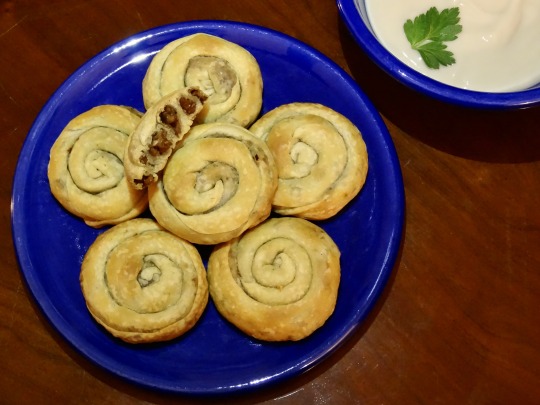
[ID: A group of pastry pinwheels on a blue plate next to a bowl of yoghurt garnished with parsley. End ID]
صفيحة يافاوية / Safiha yafawiyya (Yaffan pinwheels)
The dish
صَفِيحَة يَافَاوِيَّة ("ṣafīḥa yāfāwīyya") is a type of safiha, or flatbread, believed to have originated in the coastal city of يافا (yāfā; "Yaffa," sometimes "Jaffa"). While other versions of safiha consist of a flat piece of dough topped with meat, Yaffan safiha are made by rolling dough out to a transparent thinness, folding it to enclose a filling of meat or spinach, and then whirling it around into a pinwheel shape. More highly valued in Yaffa than flat safiha, Yaffan safiha inspires proprietary feelings amongst residents and emigrants. The technique has, however, spread to other areas in Palestine, as well as to Alexandria, Egypt, where a large number of Yaffan exiles have resettled.
Yaffan safiha may also be called "حواية" ("ḥawāya"), after a kind of towel that is stitched into a spiral and placed on top of the head to cushion it while carrying jugs of water, or trays that are hot from the oven. One Yaffan woman remembers her mother assembling these pastries at home and then bringing them, in a large copper tray, to the baker, so they could be cooked in a shared oven for a small fee. The baker's wife would have to wait to use the oven another day. The usage of communal ovens by those who do not have an oven in their home is still common practice in rural areas of Palestine.
Traditionally, the dough used to make Yaffan safiha includes only flour, salt, oil, and water. Some modern Palestinian recipes leaven the dough with baking powder; or include milk powder as a way to use food aid from NGOs, which seek to alleviate the effects of the Israeli occupation's extreme restriction of transport, travel, and agricultural activities on Palestinians' diets. With a spinach filling and without milk powder, the safa'ih may be described as "صيامي" ("ṣiyāmī): a word derived from "صِيَام" ("ṣiyām"; "fast") but which, due to the abstention from meat mandated during the Lenten fast, is colloquially used to mean "vegetarian."
Golden brown and fragrant with olive oil, these safa'ih combine layers of crisp, flaky dough with a savory, well-spiced filling. Recipes for both a 'meat' and a spinach filling are provided. A side of yoghurt and a garnish of mint round out the flavors of the filling and add tanginess and textural contrast.
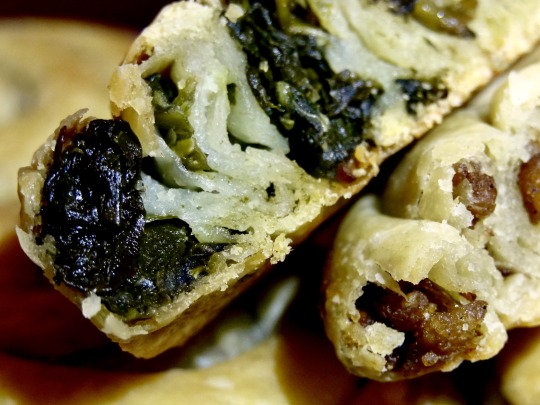
[ID: Close-up of two pinwheels cut open to reveal a spinach filling and a 'meat' filling between thin layers of pastry. End ID]
The Bride of Palestine
Yaffa is a port city with an ancient history which, until the 20th century, was the largest Arab city in, and the cultural and economic capital of, Palestine. For this reason it has sometimes been called عروس" "فلسطين ("'arūs filasṭīn"); "The Bride of Palestine." With the 1909 founding of the nearby Tel Aviv, Yaffa began to be considered its "twin" or "sister" ("האחיות") city; it had a distinctly Arab character where Tel Aviv was almost entirely Jewish. Yaffa was thus considered in disctinctly racialized terms: both attraction and threat; a source of authentic rootedness in the land which could be tapped, but also a potentially contagious bastion of Oriental "weak[ness]" ("חליש").
Yaffa had been a popular destination for culinary tourism in Mandate Palestine, with young settlers heading to the seaside to escape from religious studies and religious dietary restrictions—associated with diaspora Judaism and a lack of connection to a homeland—and to eat earthier Arab foods such as hummus, falafel, kebab, and ful.
In 1948, Zionist paramilitary organization Irgun dropped several tons of British bombs on major civilian areas of Yaffa in order to overwhelm resistance and empty the city of its Arab population; they destroyed the much of the Old City in the process. The neighborhood of المنشية (Manshiya) was destroyed shortly thereafter. Beginning in December of 1948, Yaffa was, part by part, annexed to Tel Aviv.
Today, despite the annexation and the Hebraization of the street signs, Yaffa maintains an Arab character in popular discourse. The call to prayer is heard in the streets, and the أبو العافي (Abulafia) bakery and أبو حسن (Abu Hassan) hummus restaurant and remain where they have been since the 1760s and 1970s, respectively. But increasing gentrification, rising rent prices, cafes and restaurants which cater to tourists and settlers, and the construction of Jewish-only residential projects threaten to continue the ethnic cleansing of the ancient city.
Yaffan Cuisine
Israeli occupation has tended to collapse some of the regional distinctions within Palestinian cuisine, as Palestinians are forced into exile or else crowded into Gaza and into smaller and smaller enclaves within the West Bank. Some dishes, however, still have variations that are associated with particular cities. Stuffed red carrots (محشي الجزر الأحمر; "maḥshi al-jazar al-'aḥmar"), cored and filled with rice and spiced meat, are a dish common throughout Palestine but cooked differently everywhere: in a sauce of lemon juice, pomegranate molasses, and red tahina in Gaza; in tamarind paste in Al-Quds and Ramallah; and in orange juice in the orange-rich Yaffa region. Abu Hassan restaurant serves مسبحة (msabbaha), a Yaffan classic in which chickpeas and tahina are mixed with green chili pepper, and lemon juice.
Donate to an evacuation fund
Buy an eSim for use in Gaza
Help Anera provide food in Gaza
Ingredients:
For the dough (makes 32):
500g flour (4 cups + 1 Tbsp)
1 tsp table salt
2 Tbsp olive oil
Enough water to form a soft, tacky dough (about 1 3/4 cup / 500mL)
For the meat filling (makes 16):
125g vegetarian ground beef (as a substitute for minced lamb)
1 small yellow onion, minced
1 Tbsp olive oil
1/2 tsp ground allspice
1/2 tsp ground black pepper
1/2 tsp ground cardamom
1/2 tsp table salt, or to taste
1/2 Tbsp ground sumac
1/2 Tbsp pomegranate molasses (optional)
For the spinach filling (makes 16):
500g spinach, washed and chopped
1 tsp kosher salt, for removing water
1 small yellow onion, minced
1 Tbsp olive oil
1/4 tsp ground black pepper
1/4 tsp table salt, or to taste
Squeeze of lemon juice
1 tsp shatta (hot red pepper paste)
1/2 Tbsp pomegranate molasses (optional)
Some recipes include sumac in the spinach filling, but this is not considered traditional.
Instructions:
For the dough:
1. Measure dry ingredients into a large mixing bowl. Add oil and mix briefly. Add water, a little at a time, until the dough comes together into a slightly tacky ball. Knead for five minutes, until smooth and elastic.
2. Divide dough into 16 balls of about 50g each. Roll it out into a cylinder and cut it in half repeatedly; or weigh the dough using a kitchen scale and divide by 16.
3. Pour some olive oil in a tray or baking sheet and coat each dough ball. Leave them on the tray, covered, to rest while you prepare the fillings.

For the meat filling:
1. Heat 1 Tbsp olive oil on medium-high. Add meat and fry, stirring often, until nearly cooked through.
2. Add onions, salt, and spices and fry until onion is translucent.
3. Remove from heat. Stir in sumac and pomegranate molasses. Taste and adjust. Let cool.
For the spinach filling:
1. Mix spinach with salt and let sit 10-15 minutes. Squeeze to remove excess water.
2. Heat 1 Tbsp olive oil in medium-high. Fry onion, salt, and pepper for a minute until translucent.
3. Combine all ingredients. Taste and adjust salt.
To assemble:
1. Oil a clean work surface, as well as your hands. Spread a dough ball out into a very thin, translucent circle by repeatedly patting with your fingers while pushing outwards. Be sure to push outwards from the center so that the circle does not become too thin at the edges. A few small holes are okay, since the dough will be folded and rolled in on itself.
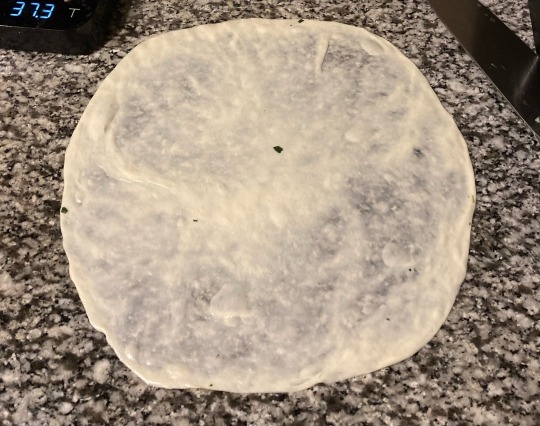
2. Cut the circle in half with a sharp knife. Spread 1/16 of either filling in a thin line along the cut edge, leaving a margin of 1 cm (1/2") or so.
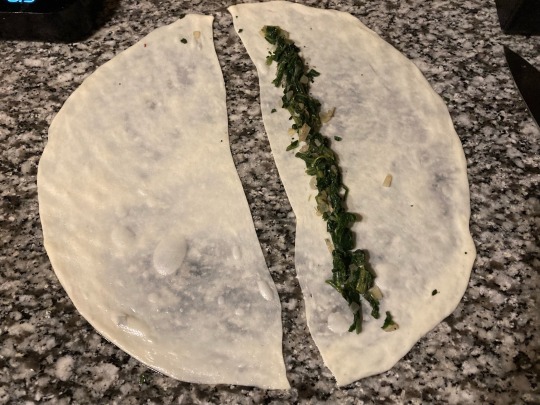
3. Roll the edge of the dough (the cut edge) over to encase the filling. Continue rolling, trying as much as possible to exclude air, until you have a long rope of dough.
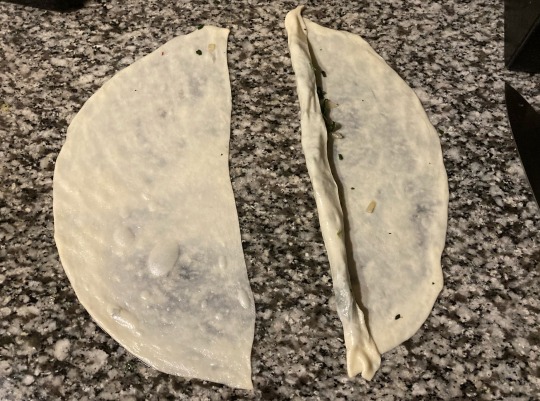
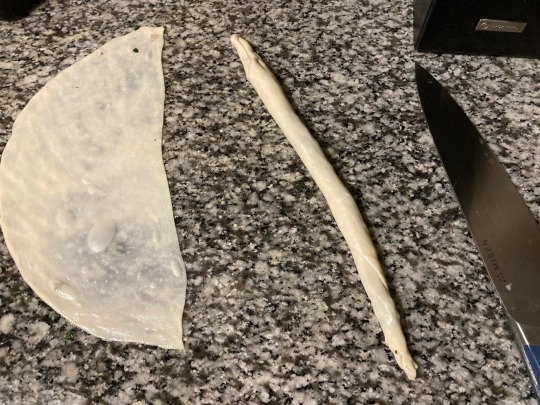
4. Roll the rope around in a tight spiral. Tuck the very end of the dough underneath and press to seal. Place on a preparing baking sheet.
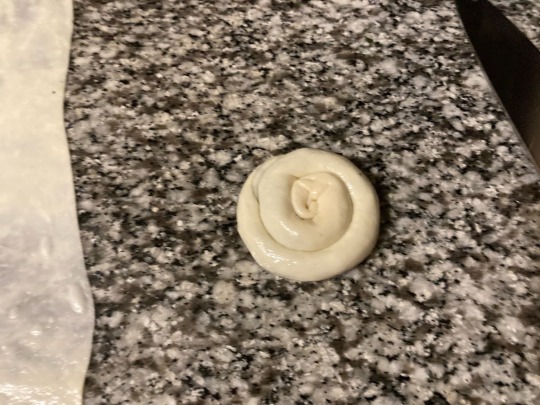
5. Repeat until the filling and dough are used up. Meanwhile, preheat an oven to 375 °F (190 °C). Bake the safiha in the top third of the oven for 25-30 minutes, or until golden in color.
Serve warm with yoghurt.
611 notes
·
View notes
Text
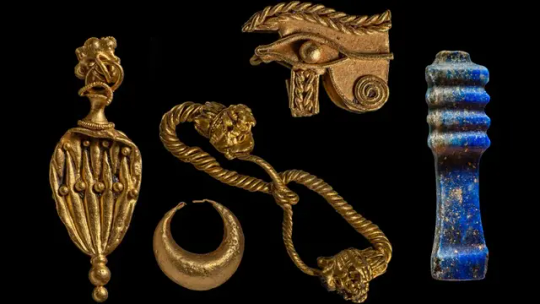
Sunken Temples of Aphrodite and Amun Found off Egyptian Coast
New discoveries off Egyptian coast reveal ‘treasures and secrets
New “treasures and secrets” have been revealed at the site of a sunken temple off Egypt’s Mediterranean coast, the European Institute for Underwater Archaeology (IEASM) announced in a news release Tuesday.
An underwater archaeological team, led by French marine archaeologist Franck Goddio, has made further discoveries at the site of a temple to god Amun in the ancient port city of Thonis-Heracleion in the Bay of Aboukir, the institute said.
The team investigated the city’s south canal, where huge blocks of stone from the ancient temple collapsed “during a cataclysmic event dated to the mid-second century BC,” the institute said.
The temple to god Amun was where pharaohs came “to receive the titles of their power as universal kings from the supreme god of the ancient Egyptian pantheon,” it said.
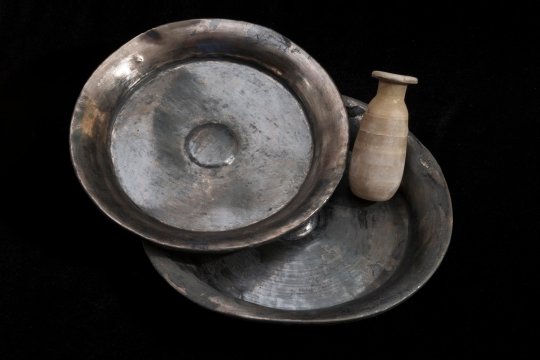
“Precious objects belonging to the temple treasury have been unearthed, such as silver ritual instruments, gold jewelry and fragile alabaster containers for perfumes or unguents,” IEASM said. “They bear witness to the wealth of this sanctuary and the piety of the former inhabitants of the port city.”
The archaeological excavations, conducted jointly by Goddio’s team and the Department of Underwater Archaeology of the Ministry of Tourism and Antiquities of Egypt, revealed underground structures “supported by very well-preserved wooden posts and beams dating from the 5th century BC,” the institute said.
“It is extremely moving to discover such delicate objects, which survived intact despite the violence and magnitude of the cataclysm,” said Goddio, who is president of IEASM and director of excavations.
The discoveries were made possible thanks to the development and use of new geophysical prospecting technologies that can detect cavities and objects “buried under layers of clay several meters thick,” the institute said.

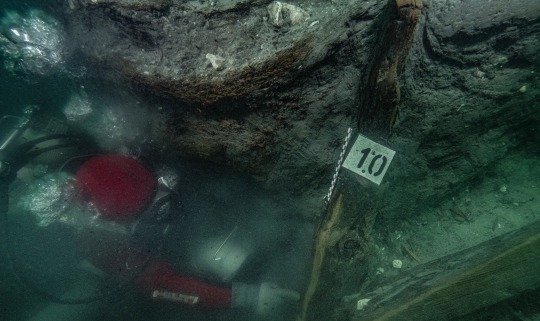
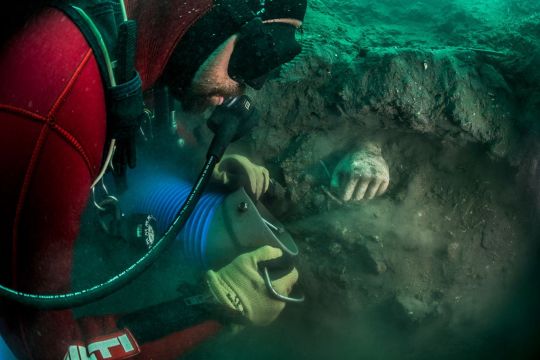
Relics from Greek presence, too
East of the Amun temple, a Greek sanctuary devoted to Aphrodite was discovered containing bronze and ceramic objects.
“This illustrates that Greeks who were allowed to trade and settle in the city during the time of the Pharaohs of the Saïte dynasty (664 - 525 BC) had their sanctuaries to their own gods,” the institute said.
The discoveries of Greek weapons also reveal the presence of Greek mercenaries in the area, IEASM said. “They were defending the access to the Kingdom at the mouth of the Canopic Branch of the Nile. This branch was the largest and the best navigable one in antiquity.”
The remains of Thonis-Heracleion are now located under the sea, 7 kilometers (4.3 miles) from the present coast of Egypt, IEASM said. The city was for centuries Egypt’s largest port on the Mediterranean before the founding of Alexandria by Alexander the Great in 331 BC.
“Rising sea levels and earthquakes followed by tidal waves triggering land liquefaction events, caused a 110 square kilometer portion of the Nile delta to totally disappear under the sea, taking with it the city of Thonis-Heracleion,” the institute said.
The city was discovered by the IEASM in 2000.
By Radina Gigova.
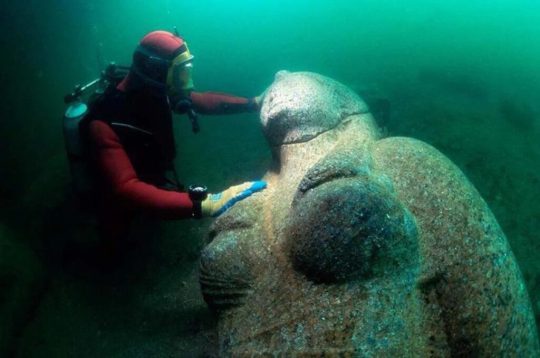
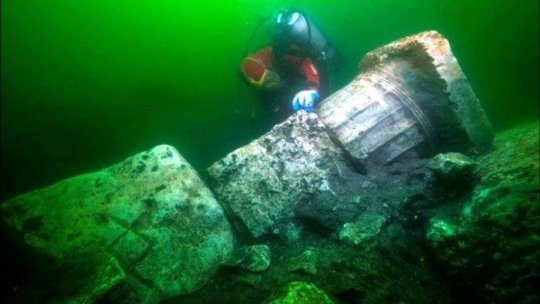

#Sunken Temples of Aphrodite and Amun Found off Egyptian Coast#Thonis-Heracleion#Bay of Aboukir#gold#gold treasure#ancient artifacts#archeology#archeolgst#history#history news#ancient history#ancient culture#ancient civilizations#ancient egypt#egyptian history#egyptian mythology#greek history
309 notes
·
View notes
Text
Holidays 2.12
Holidays
Bra Day (Japan)
Darwin Day
Flip Flop Day [also 3rd Friday in June]
Gamma Day (Illinois)
Georgia Day (US)
Gold Rush Day (Australia)
Hug Day
Immanuel Kant Remembrance Day
International Darwin Day
International Day Against the Use of Child Soldiers
International Day of the Prevention of Violent Extremism As & When Conducive to Terrorism
International Day of Women’s Health
Janet Jackson Appreciation Day
Lady Jane Grey’s Ghost Appearance Day
Lincoln's Birthday
Lost Penny Day
Love a Mensch Day
Makha Bucha Day (Thailand)
Memorial Day of 1990 Dushanbe Riots (Tajikistan)
Moresdag (Mother’s Day; Norway)
NAACP Day
Nancy Hanks Lincoln Memorial Day (Booneville, Indiana)
National Freedom to Marry Day
National Hump for a Day, Day
National Productivity Day (India)
National Women’s Day (Pakistan)
Oglethorpe Day (a.k.a. Georgia Day; US)
Paul Bunyan Day (Bangor, Maine) [also 8.10]
Peanut’s Remembrance Day
Pick A New Love Song Day
Red Hand Day (UN)
Rhapsody in Blue Day
Robinson Crusoe Rescue Day
Rubber Galoshes Day
Safety Pup Day
Sexual and Reproductive Health Awareness Day (Canada)
Susan B. Anthony Dollar Day
Tourism Day (Taiwan)
World Cholangiocarcinoma Day
World Lidar Day
Youth Day (Venezuela)
Food & Drink Celebrations
Hot Tea Day
National Biscotti Day
National P.B. & J. Day
Plum Pudding Day
Nature Celebrations
Common Knotgrass Day (French Republic)
Justiça Procumbens Day (Pure & Simple; Korean Birth Flowers)
Independence, Flag & Related Days
The Baillium Empire (Declared; 2019) [unrecognized]
Chile (Declared from Spain, 1818)
China (Became a Republic after Overthrow of Manchu Dynasty; 1912)
Commonwealth Day (Gibraltar)
Savannah, Georgia (Founded; 1733)
Sexistan (Declared; 2015) [unrecognized]
Union Day (Union of Burma Founded; 1947)
New Year’s Days
New Year for Trees (Tu Bishvat; Judaism)
2nd Wednesday in February
Hump Day [Every Wednesday]
Wacky Wednesday [Every Wednesday]
Waste-Not Wednesday (UK) [Wednesday of Go Green Week]
Watermelon Wednesday [2nd Wednesday of Each Month]
Website Wednesday [Every Wednesday]
Workout Wednesday [2nd Wednesday of Each Month]
Weekly Holidays beginning February 12 (2nd Week of February)
Borrowed Days (Scotland) [thru 2.14]_
Festivals On or Beginning February 12, 2025
Cheongwoldaeboreum, a.k.a. Korean Folk Festival (North Korea)
Great British Beer Festival Winter (Rotherham, United Kingdom) [thru 2.15]
Kosher Food and Wine Experience (Oxnard, California)
Lantern Festival (China) [Day 15 in Month 1]
National Farm Machinery Show & Tractor Pull (Louisville, Kentucky) [thru 2.15]
Taiwan Lantern Festival (Taoyuan, Taiwan) [thru 2.23]
Watertown Winter Farm Show (Watertown, South Dakota) [thru 2.15]
Feast Days
Aesop (Positivist; Saint)
Anthony Kauleas, Patriarch of Constantinople (Christian; Saint)
Ariadne’s Labyrinth Day (Starza Pagan Book of Days)
Benedict of Aniane (Christian; Saint)
Bruno (Muppetism)
Choes Day (Day of the Cups; Ancient Greece)
Damian of Alexandria (Christian; Saint)
Darwin Day (Pastafarian)
Diana’s Day (Ancient Rome)
Diana’s Day — Protection of Wildlife (Pagan)
Ethelwald of Lindisfarne (Christian; Saint)
Eulalia (Christian; Saint)
Feast of the Seven Founders of the Service Order
Feast of the Three Saints — Basil the Great, Gregory the Theologian (Orthodox Christian)
Festival of Artemis (Goddess of the Hunt; Ancient Greece)
Festival of Pitooyage (God of gaming & chance; Oaxaca, Mexico)
Fritter Thursday [Day after Ash Wednesday]
High Confiscation of Property (Church of the SubGenius)
Julian the Hospitaller (Christian; Saint) [travelers, innkeepers & circus performers]
Ludan (Christian; Saint)
Marina (Christian; Virgin)
Martyrs of Abitinae (Christian; Martyrs)
Meletius, Patriarch of Antioch (Christian; Saint)
Sacrifice to Dionysos (Ancient Greece)
Storm-Days begin (Celtic Book of Days)
Tales of Kelp-Koli (Shamanism)
Hebrew Calendar Holidays [Begins at Sundown Day Before]
Tu Bishvat (New Year for Trees) [14-15 Shevat]
Lunar Calendar Holidays
Chinese: Month 1 (Wu-Yin), Day 15 (Ren-Zi)
Day Pillar: Water Rat
12-Day Officers/12 Gods: Open Day (開 Kai) [Auspicious]
Holidays: Lantern Festival (元宵节)
Full Moon [2nd of the Year] (a.k.a. ...
Bony Moon (Cherokee)
Budding Moon (China)
Daeboreum (Great Full Moon; Korea) [1st Full Moon of Lunar Calendar]
Eagle Moon (Traditional)
Grain Moon (South Africa)
The Great Fifteenth [Lunar Calendar]
Hunger or Hungry Moon (Alternate)
Ice Moon (Celtic)
Little Famine Moon (Choctaw)
Naval Full Moon Poya Day (Sri Lanka)
Raccoon Moon (Traditional)
Snow Moon (American Indian, North America, Traditional)
Southern Hemisphere: Barley, Corn, Dog, Grain, Red, Sturgeon, Wyrt Moons
Storm Moon (England, Neo-Pagan, Wicca)
Trapper’s Moon (Colonial)
Secular Saints Days
Darren Aronofsky (Entertainment)
Max Beckman (Art)
Tex Beneke (Music)
Terry Bisson (Literature)
Judy Blume (Literature)
Omar Bradley (Military)
Rolf Brem (Art)
Charles Darwin (Science)
Friedrich de la Motte Fouqué (Literature)
R. F. Delderfield (Literature)
Jean Effel (Art)
R. Buckminster Fuller (Architecture)
Steve Hackett (Music)
Roy Harris (Music)
Abraham Lincoln (Politics)
Ray Manzarek (Music)
Michael McDonald (Music)
George Meredith (Literature)
Joan Mitchell (Art)
Thomas Moran (Art)
Zoran Mušič (Art)
Anna Pavlova (Dance)
Christina Ricci (Entertainment)
Bill Russell (Sports)
Julian S. Schwinger (Science)
George Simenon (Literature)
Marie Vassilieff (Art)
Franco Zeffirelli (Entertainment)
Lucky & Unlucky Days
Prime Number Day: 43 [14 of 72]
Sakimake (先負 Japan) [Bad luck in the morning, good luck in the afternoon.]
Unfortunate Day (Pagan) [11 of 57]
Premieres
All in Fever Say Aye or The Emotion is Carried (Rocky & Bullwinkle Cartoon, S4, Ep. 204; 1963)
Andy and Min Have a Caller (The Gumps Wallace Carlson Studio Cartoon; 1921)
Andy’s Holiday (The Gumps Wallace Carlson Studio Cartoon; 1921)
Animals, by Pink Floyd (Album; 1977)
Anti-Intellectualism in American Life, by Richard Hofstadter (Non-Fiction Book; 1963)
Emperor Hymn (a.k.a. Gott erhalte Franz den Kaiser), by Joseph Haydn (Austrian Anthem; 1797)
The Automobile Ride (Fleischer Goldwyn-Bray Pictographs Cartoon; 1921)
Beanstalk Bunny (WB MM Cartoon; 1955)
The Best of Luck (The Gumps Wallace Carlson Studio Cartoon; 1921)
Blast from the Past (Film; 1999)
Blow-Up and Other Stories, by Julio Cortázar (Short Stories; 1968)
The Blue Umbrella (Animated Pixar Short; 2013)
Boomerang Bowler or Boris Makes a Comeback (Rocky & Bullwinkle Cartoon, S4, Ep. 203; 1963)
Bunny Mooning (Fleischer Color Classic Cartoon; 1937)
Centennial, by James A. Michener (Historical Novel; 1974)
Chester’s Cat (The Gumps Wallace Carlson Studio Cartoon; 1921)
Crazy Town (Noveltoons Cartoon; 1954)
A Dangerous Girl (Keen cartoon; 1917)
Deadpool (Film; 2016)
Dracula (Film; 1931)
English Settlement, by XTC (Album; 1982)
The Further Adventures of Hardrock Dome (Paramount-Bray Pictographs Cartoon; 1919)
Give ‘er the Gas (The Gumps Wallace Carlson Studio Cartoon; 1921)
Groundhog Day (Film; 1993)
Homeward Bound, by Simon & Garfunkel (Song; 1966)
Hop On Pop, by Dr. Seuss (Children’s Book; 1963)
Il Cuspidore (The Gumps Wallace Carlson Studio Cartoon; 1921)
The International (Film; 2009)
I’ve Got My Love to Keep Me Warm, by Dick Powell and Alice Faye (Song; 1937)
Kittens’ Mittens (Car-Tune Cartoon; 1940)
Life Is Beautiful (Film; 1999)
The Lyin’ Hunter (Krazy Kat Cartoon; 1937)
The Map of Tiny Perfect Things (Film; 2021)
The Masked Ball (The Gumps Wallace Carlson Studio Cartoon; 1921)
Maybe I’m Amazed (Live), by Paul McCartney and Wings (Song; 1977)
Michigan State University (School; 1855)
More Than You Know, recorded by Mildred Bailey (Song; 1942)
Moving Pictures, by Rush (Album; 1981)
NAACP (Civil Rights Organization; 1909)
On Golden Pond (Film; 1982)
On the Avenue (Film; 1937)
Percy Jackson & the Olympians: The Lightning Thief (Film; 2010)
Pink Pest Control (Pink Panther Cartoon; 1969)
Pluto’s Housewarming (Disney Cartoon; 1947)
Porky Chops (WB LT Cartoon; 1949)
Progress (Heasrt-Pathe News Cartoon; 1918)
The Promoters (The Gumps Wallace Carlson Studio Cartoon; 1921)
Rear Window, by Cornell Woolrich (Short Story f.k.a. It Had To Be Murder; 1942)
Rhapsody in Blue, by George Gershwin (Musical Composition; 1924)
Rhythm Lullaby and Bubbling Over, by Earl Hines & His Orchestra (Songs; 1935)
Robocop (Film; 2014)
Rolling Around (The Gumps Wallace Carlson Studio Cartoon; 1921)
Roundabout, by Yes (Song; 1972)
Run to the Hills, by Iron Maiden (Song; 1982)
School Daze (Film; 1988)
The Shot Heard Round the World or The First National Bang (Rocky & Bullwinkle Cartoon, S2, Ep. 98; 1961)
Sign of the Unicorn, by Roger Zelazny (Novel; 1975) [The Chronicles of Amber, #3]
The Son Shower (Aesop’s Film Fable Cartoon; 1928)
The Space Rat or Of Mice and Menace (Rocky & Bullwinkle Cartoon, S2, Ep. 97; 1961)
The Squaw Man (Film; 1914) [1st Film made in Hollywood]
Stay Tuned (WB Cartoon; 1993)
Strictly Ballroom (Film; 1993)
Studebaker (Automobile Company’s 1st Sale; 1902)
The Swooner Crooner (Blue Ribbon Hit Parade Cartoon; 1949)
Taft Playing Golf (Criterion Komic Kartoons Cartoon; 1915)
Tapper (Videogame; 1984)
Times and Patowmack Packet (Newspaper; 1789) [1st D.C. newspaper]
Tom Turk and Daffy (WB LT Cartoon; 1944)
Untamed Heart (Film; 1993)
Vermont Gazette (Newspaper; 1781) [1st Vermont newspaper]
We Give Pink Stamps (Pink Panther Cartoon; 1965)
Whoops! I’m a Cowboy (Betty Boop Cartoon; 1937)
Zoolander 2 (Film; 2016)
Today’s Name Days
Benedikt, Eulalia, Gregor (Austria)
Zvonimir, Zvonko (Croatia)
Slavěna (Czech Republic)
Eulalia (Denmark)
Alma, Alme, Elma, Elme, Elmi (Estonia)
Elma, Elmi (Finland)
Félix (France)
Benedikt, Eulalia (Germany)
Meletios, Meletis, Plotinos (Greece)
Lídia, Lívia (Hungary)
Alessio, Eulalia, Pilerio (Italy)
Karlīna, Karline, Līna (Latvia)
Benediktas, Deimantė, Eulalija, Mantminas (Lithuania)
Randi, Randulf, Ronja (Norway)
Aleksy, Benedykt, Eulalia, Julian, Laurenty, Modest, Nora, Radzim, Trzebisława (Poland)
Meletie (Romania)
Perla (Slovakia)
Eulalia (Spain)
Evelina, Evy (Sweden)
Ulas (Ukraine)
Abra, Abraham, Abram, Bram, Darwin, Ibrahim (USA)
Today’s National Name Days
National Braydon Day
Today is Also…
Day of Year: Day 43 of 2025; 322 days remaining in the year
ISO Week: Day 3 of Week 7 of 2025
Celtic Tree Calendar: Luis (Rowan) [Day 23 of 28]
Chinese: Month 1 (Wu-Yin), Day 15 (Ren-Zi)
Chinese Year of the: Snake 4723 (until February 17, 2026) [Ding-Chou]
Coptic: 5 Amshir 1741
Druid Tree Calendar: Hackberry (Feb 9-18) [Day 4 of 10]
Hebrew: 14 Shevat 5785
Islamic: 13 Sha’ban 1446
Julian: 30 January 2025
Moon: 100%: Full Moon
Positivist: 15 Homer (2nd Month) [Aesop)
Runic Half Month: Sigel (Sun) [Day 7 of 15]
Season: Winter (Day 54 of 90)
SUn Calendar: 13 Gray; Sixthday [13 of 30]
Week: 2nd Week of February
Zodiac:
Tropical (Typical) Zodiac: Aquarius (Day 24 of 30)
Sidereal Zodiac: Capricorn (Day 29 of 29)
Schmidt Zodiac: Capricorn (Day 18 of 27)
IAU Boundaries (Current) Zodiac: Capricorn (Day 24 of 28)
IAU Boundaries (1977) Zodiac: Capricornus (Day 25 of 28)
3 notes
·
View notes
Text
Mercedes car rental
شركة VIP Mercedes تأجير مرسيدس للمطار
Offering a 15% discount on Mercedes car rental in Cairo ايجار مرسيدس
Rent a Mercedes E200 for Luxurious Airport Transfers and Sightseeing Tours in Egypt
Looking for a premium car rental experience in Egypt? Mercedes Rental Services is your trusted choice for luxury car rental with the stylish and comfortable Mercedes E200. Whether you need reliable airport transfers to and from Cairo International Airport or you’re planning a memorable sightseeing trip, our Mercedes E200 offers the perfect combination of luxury, performance, and comfort for your journey.
### Mercedes E200 for Exclusive Sightseeing Tours
Explore Egypt’s breathtaking destinations with the sophistication of a Mercedes E200. Visit the Pyramids of Giza and marvel at one of the Seven Wonders of the Ancient World. Drive along the scenic Nile River in Cairo, or enjoy a day trip to Alexandria to see the Mediterranean coast, historical sites, and famous landmarks like the Citadel of Qaitbay. Take a luxurious drive to Luxor and Aswan to discover the wonders of ancient Egyptian temples and monuments. With our Mercedes E200, you’ll enjoy every moment of your journey in elegance and style.
Why Choose Mercedes E200 for Your Next Trip?
Our Mercedes E200 features a sleek design, leather interiors, advanced safety features, and superior handling, making it the ideal choice for anyone seeking a luxury experience on Egyptian roads. This vehicle is not only visually stunning but also provides a smooth, safe, and quiet ride, ensuring that you arrive at every destination feeling relaxed and refreshed.
Key Features of Our Mercedes E200 Rental:
- Airport Transfer Service: Arrive at your destination with style and comfort.
- Private Sightseeing Tours: Explore Egypt’s top tourist spots in a premium vehicle.
-Professional Drivers : Our chauffeurs are experienced and knowledgeable.
- Hourly and Daily Rentals Available: Flexible rental options for your convenience.
Book your **Mercedes E200 car rental** now with **Mercedes Rental Services** and enjoy luxury, comfort, and reliability. Perfect for **Cairo airport transfers**, city tours, day trips, and special occasions. Discover Egypt in a Mercedes E200 and elevate your travel experience.
- Mercedes E200 rental in Egypt
- Luxury car rental Cairo
- Airport transfer Mercedes Cairo
- Sightseeing car rental Egypt
- Mercedes for hire Egypt
- Rent Mercedes E200 Cairo.
Car rental, Mercedes rental, car rental price, Mercedes airport rental, Mercedes airport delivery, car rental services, Mercedes rental with driver, MercedesRental, MercedesForRent, MercedesAirport, MercedesVip ,Mercedes Viano rental, rent Mercedes Viano Egypt, airport transfer Egypt, Mercedes Viano for tourism, luxury van rental Egypt, Cairo airport transfer, Giza Pyramids tour, Alexandria tourism
For reservations and inquiries |
01119920103 _01101055099
Title |
12 Hegaz Street - Court Square - Heliopolis
Website|
Facebook|
#Car rental#Mercedes rental#car rental price#Mercedes airport rental#Mercedes airport delivery#car rental services#Mercedes rental with driver#MercedesRental#MercedesForRent#MercedesAirport#MercedesVip#Mercedes Viano rental#rent Mercedes Viano Egypt#airport transfer Egypt#Mercedes Viano for tourism#luxury van rental Egypt#Cairo airport transfer#Giza Pyramids tour#Alexandria tourism
0 notes
Text
Offering a 15% discount on Mercedes car rental

شركة VIP Mercedes تأجير مرسيدس للمطار
Offering a 15% discount on Mercedes car rental in Cairo ايجار مرسيدس
Mercedes Passenger Car Rental in Egypt – Premium Airport and Tourism Services
Discover Egypt in ultimate comfort and style with our Mercedes passenger car rental service, tailored for airport transfers and tourism trips. Our company, a trusted provider of luxury car rentals, specializes in high-end transportation across Egypt, offering travelers a smooth, dependable experience with Mercedes vehicles renowned for their luxury and performance. Whether you’re arriving at Cairo International Airport or planning to explore the stunning sights of Egypt, we provide a variety of Mercedes models that cater to your every need.
Our fleet of Mercedes cars ensures top-quality travel, from luxurious leather interiors to advanced safety features, ideal for family trips, business engagements, or private tours. Enjoy professional drivers, spacious seating, and seamless travel to Egypt’s renowned destinations. With our rental service, visiting the treasures of Egypt becomes an unforgettable experience.

Top Mercedes rental destinations include:
1. Cairo and Giza – Enjoy the elegance of a Mercedes while visiting the Great Pyramids, the Sphinx, and Cairo’s vibrant cityscape.
2. Luxor and Aswan – Travel in luxury through the Valley of the Kings, Karnak Temple, and along the Nile, relishing the convenience and comfort of a premium vehicle.
3. Alexandria– Cruise along the Mediterranean coast to the Citadel of Qaitbay, Alexandria Library, and more in a stylish and comfortable Mercedes.
4. Red Sea Resorts – Relax as you journey to Red Sea resorts like Hurghada and Sharm El Sheikh, ideal for a luxury retreat.
Our company stands out for its commitment to excellence, prioritizing customer satisfaction and safety. Each Mercedes vehicle is maintained to the highest standards, and our experienced drivers ensure timely, stress-free travel to your destination. From airport pickups to tours across Egypt’s landmarks, we offer a premier car rental service tailored to elevate your travel experience.
Mercedes car rental Egypt, rent Mercedes Egypt, Cairo airport transfer, Mercedes for tourism Egypt, luxury car rental Egypt, Egypt tourism Mercedes, Giza Pyramids tour, Alexandria luxury travel
Car rental, Mercedes rental, car rental price, Mercedes airport rental, Mercedes airport delivery, car rental services, Mercedes rental with driver, MercedesRental, MercedesForRent, MercedesAirport, MercedesVip ,Mercedes Viano rental, rent Mercedes Viano Egypt, airport transfer Egypt, Mercedes Viano for tourism, luxury van rental Egypt, Cairo airport transfer, Giza Pyramids tour, Alexandria tourism
For reservations and inquiries |
01119920103 _01101055099
Title |
12 Hegaz Street - Court Square - Heliopolis
Website|
Facebook|
#Car rental#Mercedes rental#car rental price#Mercedes airport rental#Mercedes airport delivery#car rental services#Mercedes rental with driver#MercedesRental#MercedesForRent#MercedesAirport#MercedesVip#Mercedes Viano rental#rent Mercedes Viano Egypt#airport transfer Egypt#Mercedes Viano for tourism#luxury van rental Egypt#Cairo airport transfer#Giza Pyramids tour#Alexandria tourism
0 notes
Text
فندق تاريخي عتيق من الاسكندرية 🏬💙✨


فندق " متروبول " تم تشييده سنة 1902 ، الفندق يعتبر من علامات منطقة محطة الرمل بالاسكندرية ، الفندق كان و ما زال مقصد للأثرياء و للمشاهير من كل الدول ، و من أشهر رواده في مصر من الزمن الجميل " ليلى مراد و محمد عبدالوهاب و نجيب الريحاني و الشاعر أمل دنقل و نجيب محفوظ .. و غيرهم
الفندق فيه تحف و مقتنيات من القرن السادس عشر !
مكان عتيق و مميز لسه بيحتفظ بكل تفاصيله من اكتر من قرن ..
#📷 M7md W7id#alexandria#Metropole Hotel#Alexandria Egypt#Tourism in Egypt#Authenticity and history#Quoted with love#Quote and pictures#egypt 🇪🇬#💙🇪🇬✨🌊🥰
9 notes
·
View notes
Text
No Jews attended opening of renovated Ben Ezra synagogue
A restoration project undertaken in 2022 by the Egyptian Ministry of Tourism and Antiquities culminated in a grand opening with Egyptian dignitaries of Cairo’s Ben Ezra Synagogue – site of the Cairo Geniza – at the end of August 2023. There were no Jews in attendance for the opening: Egypt is more interested in encouraging tourism than in restoring cultural ties with the Egyptian-Jewish diaspora. Meanwhile it bans access to historical records and has aggressively seized a Geniza discovered in 2022. Must-read by Kate Fitz Gibbon in Cultural Property News (with thanks: Boruch)

Interior of the Ben Ezra synagogue: the Cairo Geniza was discovered in the attic
The Ben Ezra Synagogue is located in Fustat, in Old Cairo. Originally founded in the 9th century CE, it is considered the oldest synagogue in Cairo. The current building dates mostly to the 1890s; the synagogue has been partially destroyed and rebuilt several times over the centuries. The synagogue has been restored more than once and has served as a tourist destination in Cairo for years. Visits are expected to increase after the current rehabilitation of the synagogue.
Since the number of Jews remaining in Egypt can now be counted on one hand, the Sisi government’s focus is exclusively on promoting foreign tourism, not on restoring cultural ties with the Egyptian Jewish diaspora. Cairo’s Jewish population numbered almost 50,000 before the 1956 and 1967 wars. The forced emigration of the vast majority of Egyptian Jews in the mid-20th century left the Ben Ezra synagogue deserted and dilapidated for decades.
For its re-opening as a tourist site, the synagogue has been cleaned, its ceiling repaired and its lighting and wall decoration restored. The synagogue is not intended for worship, but to be seen as a relic of Jewish history in Egypt.
Tourist travel to Egypt underwent a significant drop in popularity after turbulence of the Arab Spring and the violent crackdowns that followed. It has still not recovered, but rather than learning from the travel industry’s dictum that “democracy promotes tourism,” the Egyptian government appears to hope that building museums and promoting new venues will distract the world from its authoritarian rule. Notwithstanding Egypt’s appalling human and civil rights abuses against political dissenters and multi-year prison sentences given to TikTok-ing teenage girls for “violating family values,” Egypt’s government has made conciliating gestures in some areas of culture. One is to encourage cooperation between Egyptian authorities and foreign Jewish heritage organizations dedicated to restoring ancient sites and cemeteries.
Egypt’s on-again off-again support for restoration of Jewish heritage in Cairo demonstrates both its government’s interest in promoting Jewish tourism to Egypt and its marked reluctance to commit to a more significant commitment to allow researchers and scholars access to the Jewish community’s historical records.
In the last decade, a number of Jewish sites have been refurbished and restored – with the approval of the Egyptian government but with much of the funding coming from the USA. The Egyptian government not only cooperated in the restoration but also provided much of the funding for cleaning and restoring the Eliyahu Hanavi synagogue in Alexandria and most recently, the Ben Ezra synagogue in Cairo.
The newly restored Ben Ezra is known worldwide as the original holding place of the Cairo Geniza, discovered in an attic in the women’s section, the most private in the synagogue, in 1896. The term Geniza designates a repository of discarded writings. According to medieval Jewish tradition, no writing that contains the name of God should be destroyed by fire or otherwise; it should instead be put aside in a special room for perpetuity or buried in a cemetery. (…)
The refurbishment of two synagogues is a welcome move – but one tinged with bitterness when looking to the decades of past vandalism and deliberate destruction of Jewish cemeteries and places of worship. The importance of the known Geniza records to scholarship in the last 100 years also points to the depth of loss of another potential treasure trove of information when Egyptian authorities seized a newly discovered Geniza from a Jewish cemetery in 2022 – a treasure whose whereabouts remains unknown.
The story of the lost Geniza begins with how decades of neglect of Jewish synagogues and cemeteries in Egypt inspired foreign activists and historians to extraordinary efforts to retrieve and preserve what remains. Prof. Yoram Meital of Ben-Gurion University’s Middle East Studies Department has been active in helping Cairo’s Jewish community to restore cemeteries and places of worship. He has expressed appreciation for the Egyptian government’s support of restoration and cleanup of Jewish sites, saying that the government’s attitude has much improved under the Sisi regime. He told Israel’s Haaretz News Magazine that, “conserving Jewish heritage as part of Egypt’s heritage depends on the wide support of Egypt’s government and society.”
The position of the Jewish heritage workers volunteering in preservation projects in Egypt today is that in principle, Jewish items should remain in Egypt. The Egyptian government has remained rigidly tied to this position, and even Torahs are listed in an Egyptian agreement executed by the U.S. State Department that blocks imports of Torahs taken from Egypt and requires returning them to its government. Jewish and Christian ritual objects, including antique Torah scrolls, tombstones, books, Bibles and religious writings are covered under these agreements.
Meital has also said that the volunteers understand that restored synagogues could be used as public community centers, “on condition that they don’t change anything having to do with artifacts and architecture.” This perspective is controversial among Egyptian Jews in the diaspora, for whom Jewish religious objects should belong to Jewish communities and a synagogue is exclusively a place for worship and study.
Without the efforts of the Jewish volunteers and that of Egyptian supporters who share concerns for preservation, almost all Jewish religious heritage, whether synagogues or cemeteries, would be at risk of destruction through neglect or appropriation. Meital says that he and others working to restore synagogues have recovered over 1000 books from disused buildings, “strewn all over the place.” They also found a metal container in the cellar of a Cairo synagogue filled with records of the entire Ashkenazi community in Egypt. Their most important find was in a Karaite synagogue in Cairo, a manuscript of the Bible written 1,000 years ago. The project hopes to establish a library in Cairo to hold all the materials they have collected and are now documenting, but for now, the finds are being held in a “safe location.”
Meital’s main focus has been to photograph and document in detail the existing conditions, any inscriptions, architectural forms, or remaining ceremonial objects in old Jewish sites in Egypt for a comprehensive database. Meital says that there are 16 known synagogue buildings in Egypt – 13 of these are in Cairo. A number of cemeteries were deemed abandoned by surrounding communities and simply used as garbage dumps. Meital described how the Bassatine cemetery was so covered in trash that 250 truckloads of garbage were removed before tombstones could be cleared and righted, gates to tombs reinstalled, paths cleaned and restored, and graves polished. However, not all has gone smoothly with that renovation.
The renovation project at the Bassatine cemetery was originally inspired by Magda Haroun, one of handful of Egyptian Jews remaining in Cairo today and a staunch supporter of the preservation of Jewish history. The cleaning and restoration of the cemetery was approved by Egyptian authorities and paid for by American Jews and other sponsors. However, the authorities’ attitudes have not been entirely supportive.
In 2022, members of the Jewish community were working to clear the tons of old tires and rubbish from the Bassatine cemetery in Cairo when a Geniza – a buried storehouse of religious, family, and economic records – was discovered buried in the cemetery.
While the Jewish sponsors of the restoration have insisted that all finds from Jewish buildings and cemeteries will remain in Egypt, and only asked to be able to safely preserve them there, Egyptian authorities aggressively took possession of what appear to have been thousands of records in the buried Geniza.
As soon as the news of the Geniza’s discovery spread, the government’s Antiquities Authority broke through a cemetery wall and interrupted their removal by the Jewish community. The Jews present pleaded that at the least, a rabbi should oversee the dismantling of the relics of their community, but they were ignored. Government agents threw the records into 165 plastic sacks, loaded them onto trucks and took them away.
No access has been granted since. All information about when the records in this Geniza were made, their contents and the light they could shed on the historical community remains unknown. Sen. Gary Peters, a Michigan Democrat, has urged the Biden administration to protest the seizure of records that rightly belong to Egypt’s Jewish community. It is not known whether the U.S. State Department has made a serious effort to reclaim these records for Egypt’s tiny remaining Jewish community – or sought greater access for the world’s scholars. The Egyptian government has also remained silent on what has been done with this lost Geniza.
Read article in full
24 notes
·
View notes
Text
New Tabosiris Magna temple discovery west of Alexandria.

Foundation deposits and archaeological discoveries tell more about the secrets of the region's past throughout the Ptolemaic era at Alexandria . book your tour now to Egypt through EGYPT TOURS to see the beauty of Alexandria.
The Egyptian-Dominican archaeological expedition, led by Dr. Kathleen Martinez and in collaboration with the National University "Pedro Henriquez Orena" (the Universidad Nacional Pedro Henriquez Ureña), discovered foundation deposits under the southern wall of the outer wall of the temple of Alexandria. you can visit Alexandria from 6 Days Cairo, Alexandria & Luxor Luxury package to see the magnificent city. book our 4 Days Egypt Tour from Alexandria with best prices.
The excavations revealed a variety of archaeological finds, funerary and ritual objects that reveal more about the secrets of this area during the late Ptolemy period. make it a unique trip by booking Egypt luxury tours to feel different vibes. Alexandria is one of the best cities in Egypt that you should visit during 6 Days Cairo. Ismalia, Alexandria, and El Alamein Luxury trip to enjoy the sunset view behind the sea.
Dr. Mohammed Ismail Khalid, Secretary General of the Supreme Council of Antiquities, pointed out that among the outstanding pieces that have been uncovered is a small white marble statue of a lady wearing a royal crown and another limestone bust of a king wearing a headdress "Nimes," . book 8 Days Cairo, Luxor & Hurghada Luxury tour to explore more sightsees at Egypt. Dr. Kathleen Martinez believes that the statue of the discovered lady belongs to Queen Cleopatra VII, in contrast to what many archaeologists. book 5 Days Cairo, Luxor, and Hurghada Luxury Trip to see the beauty of Egypt. you can visit Alexandria by booking 7 Days Luxury trip to Egypt to see the magnificent city.
The expedition also discovered 337 coins, many of which bear the image of Queen Cleopatra VII, a set of ritual clay pots, oil lamps, limestone utensils for preserving food and cosmetics, bronze figurines, an amulet in the form of a scarab inscribed with the words. enjoy your holiday at Egypt by booking 10 Days Cairo, Alexandria, Siwa & with Nile Cruise Luxury Package to see the historical places at Egypt ."the Justice of RA has shone" and a bronze ring dedicated to the goddess Hathor, in addition to a collection of shqaf and pottery dating the temple to the late Ptolemaic era, demonstrating that the construction .make your new year unforgettable by bookingEgypt CHRISTMAS tours to enjoy it with your family.
@cairo-top-tours
0 notes